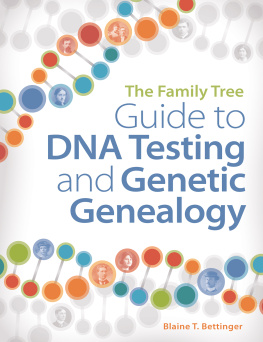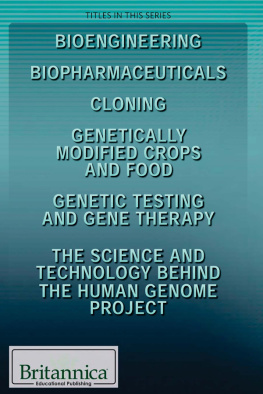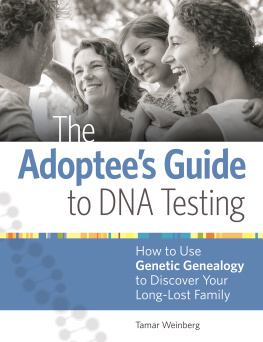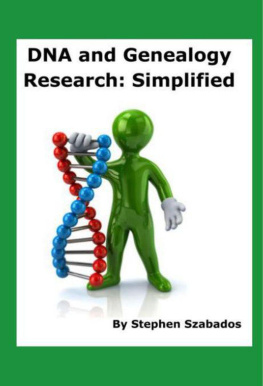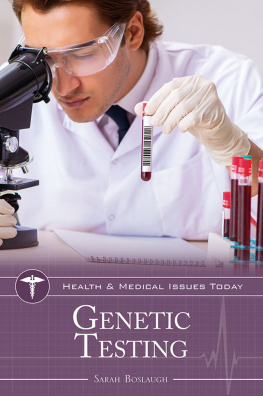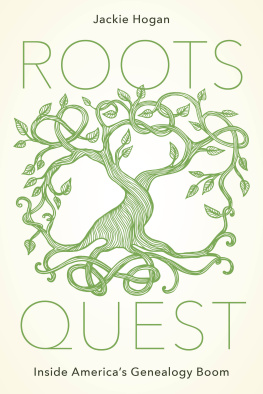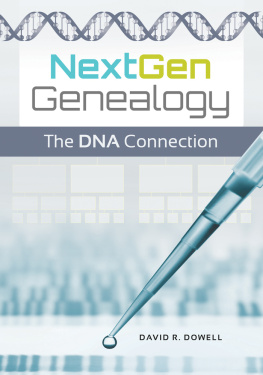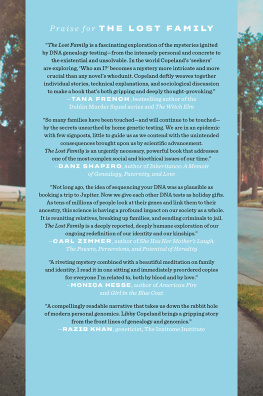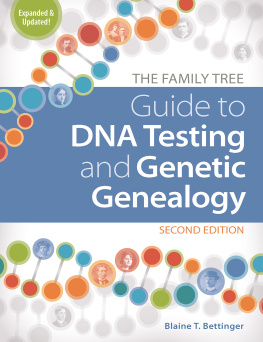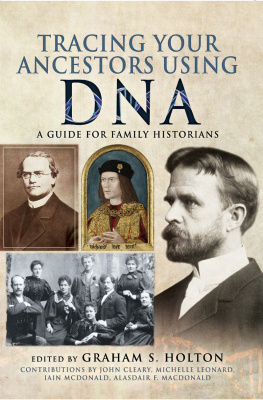Contents
Guide
The Family Tree
Guide to
DNA Testing
and Genetic
Genealogy
Blaine T. Bettinger

CINCINNATI, OHIO
shopfamilytree.com
DEDICATION
To my paternal grandparents Roy Harry and Laurentine Loverna (Mullin) Bettinger, and my maternal grandparents Theodore Roosevelt and Jane Rose (Garcia) LaBounty.
CONTENTS
Kick-start your genetic research. This chapter features a brief history of DNA testing and breaks down DNA and the four popular genetic tests, plus how to identify your genetic family tree.
Debunk your DNA myths. This chapter addresses eleven common misunderstandings about DNA to set you straight as you begin your genetic research.
Conduct conscientious and responsible studies. This chapter explores some of the ethical issues involved in DNA testing for family research and how to account for them.
Discover your female maternal ancestors and answer research questions about them with this guide to the oldest DNA test.
Find your paternal male ancestors. This chapter discusses how to use Y-DNA to track your male-line descendants and solve genealogical problems.
Explore your whole genetic family tree with this chapters guide to the atDNA test, the most popular and (arguably) most useful DNA analysis.
Pinpoint your genetic ancestors. This chapter discusses how to use X-DNA and its inheritance patterns to grow your family tree.
Broaden your DNA analysis with this chapters tips for using software, online tools, and other third-party programs to analyze atDNA test results.
Unpack the estimates provided by DNA testing companies. This chapter shows what you canand cantlearn about your ancestry from ethnicity estimates.
Dig deeper into your DNA research with these tips and strategies for using your DNA results to break through brick walls and answer challenging research questions.
Uncover your hidden past. This chapter provides strategies for adoptees and other individuals who may face an extra hurdle when researching ancestors.
Gaze into DNAs future with these predictions about the fields trajectory and what you can hope to achieve as genetic technology advances.
INTRODUCTION
Genealogical records are not perfect. Our ancestors had poor memories just like we do: They bent the truth to make themselves younger or seem more favorable just like we do, and they made up stories just like we do. In addition, genealogical records can be altered, improperly transcribed or recorded, or completely lost, even in the years immediately after their creation.
As a result, genealogists work with a trail of imperfect and inconsistent bread crumbs, and we use these traces to recreate the lives of our ancestors. Sometimes we do a good job, sometimes we do a poor job, and sometimes we may not know the difference.

Trapped within your DNA, however, are the stories of your ancestors. Although this information was inaccessible to previous generations of genealogists, modern genetic testing has allowed us to extract those stories and begin to add them to the rich genealogical tapestry so many of us spend our lives creating.
Although DNA is a (mostly) unchangeable record of those ancestors who provided bits and pieces of their DNA to the current generation, we are currently limited in our ability to properly interpret the whole record. Indeed, interpreting DNA test results can introduce errors and inconsistencies. As a result, current genetic genealogy testing is not yet a perfect genealogical record either. Only when DNA and traditional genealogical records are combined do we begin to fully extract the full value of genetic testing.
My Genetic Genealogy Journey
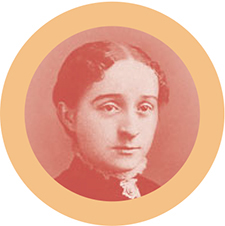
I was introduced to genealogy in the seventh grade. My English teacher assigned a short homework assignment: a four- or five-generation family tree that we were to fill out as far back as we could by asking family members for information. My parents recommended that I call my grandmother, as she was one of the oldest members of that generation. During the call, my grandmother recited a litany of names and places completely from memory. I frantically filled out the paternal side of the family tree, then added sheets of paper with even more ancestors. With that one phone call, I was hooked. Ive spent the ensuing twenty-five years trying to verify those names, learn about those ancestors lives, and fill in the blanks that my grandmother couldnt provide.
I took my first DNA test in 2003. I was a biochemistry graduate student in Syracuse, New York, and a DNA test was the perfect marriage of the two great loves of my life: genealogy and science. Unlike most other people in that timeframe, who started their DNA journey with a Y-chromosomal (Y-DNA) or mitochondrial-DNA (mtDNA) test, my first test was an autosomal DNA (atDNA) test. It only looked at a little over one hundred markers (compared to the hundreds of thousands of markers used today), but I was once again hooked. That autosomal test was just the first in a very long line of DNA testing, including a full sequence of my entire genome by the Personal Genome Project ten years later.
Along the way, Ive learned a great deal about my genealogical heritage as a result of DNA testing. I know that my mitochondrial DNA is Native American, meaning that my mothers mothers mothers mother was Native American at some point. I know that I carry African and Native American segments of DNA from Central American ancestors. I know that I have pieces of DNA passed down to me from my French Canadian and Irish ancestors. And I am beginning to identify the parents of my adopted great-grandmother, all due to DNA testing. Ive used modern genetic testing to extract stories that I was carrying with me all alongstories that my ancestors, including the grandmother who gave me the gift of genealogy, unknowingly passed down to me.
Across the country and across the world, every vial of spit and every cheek swab thrown in the mail with anticipation is overflowing with long-forgotten stories waiting to be unlocked from within a series of As, Ts, Cs, and Gs.
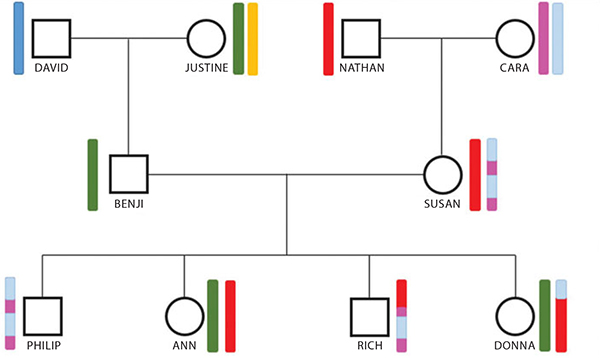
Throughout the book, diagrams, such as this X-DNA chart from , will help illustrate important concepts in genetic genealogy.
How to Use This Book
This book is intended to be a resource for genealogists of all experience levels, from beginner to expert and everyone in between. If youve never taken a DNA test, then you can use this book as a primer to understand what DNA testing is, whether DNA testing is right for you, and how you can use the results of DNA testing to examine your ancestry. My advice to you is to read the book from start to finish as it is presented, since it is written with more basic information at the beginning and more advanced information toward the end.
Throughout the book, youll note special terms, indicated in red. These are important vocabulary words youll encounter in your genetic research, and Ive compiled them into a glossary toward the back of the book for your reference.

